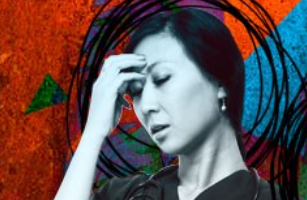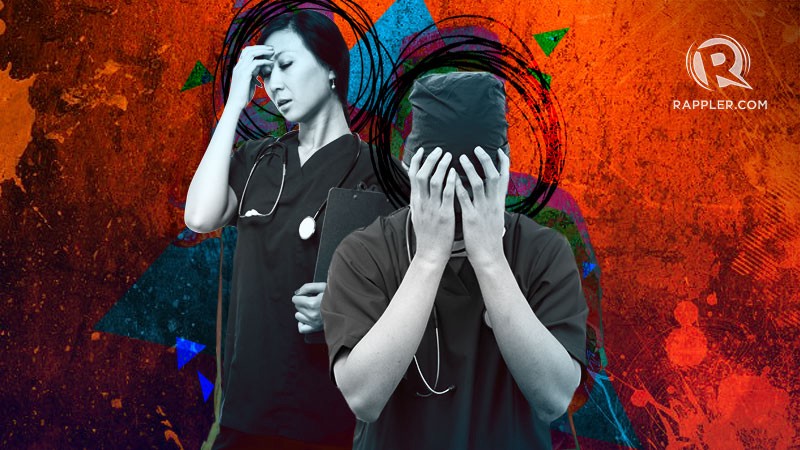Based on our focus group conversations, we propose an expanded framework of burnout to include previously underrecognized dimensions of: (1) isolation, (2) division, and (3) disconnection.
We urge health system leaders to act swiftly to ensure that the postpandemic future of health care will be one of less isolation, less moral injury, and less burnout.
The Permanente Journal — Kaiser Permanente
Sneha Mantri, MD, MS 1,2; Karen Jooste, MD, MPH 2,3; Jennifer Lawson, MD 2,3; Brian Quaranta, MD, MA 2,4; John Vaughn, MD 2,5
Perm J 2021;25:21.005 https://doi.org/10.7812/TPP/21.005 E-pub: 09/21/2021
Long before the coronavirus outbreak, burnout in medicine had become epidemic, not only impacting the lives of health-care providers, but also patient outcomes and health-care costs.
The conceptual model of burnout is failed work-life balance, wherein increasing administrative burden or systemic policies chip away at physician resilience.
The recommended treatment is the rest cure: detach from clinical duties, take a vacation, refresh, and reset.
Yet, despite an explosion of lunchtime yoga classes and mindfulness meditation apps, burnout continues to worsen across all medical specialties.
The conceptual model of burnout is failed work-life balance …
The recommended treatment is the rest cure …
Yet, despite an explosion of lunchtime yoga classes and mindfulness meditation apps, burnout continues to worsen across all medical specialties.
One possible reason for the failure of wellness initiatives is their focus on individual factors such as personality traits or coping strategies.
Although “burnout” was originally defined as an occupational syndrome, the Maslach Burnout Inventory, a commonly used measure of burnout, subdivides burnout into domains of
- emotional exhaustion,
- depersonalization, and
- reduced professional efficacy-all individual traits.
In fact, the term “burnout” itself may alienate sufferers by stressing personal shortcomings rather than systemic failures.
Our group was interested in hearing the stories within the experience of burnout to illuminate a way forward to mitigate distress and support resilience.
Based on a series of focus group conversations with trainees, faculty, and staff at our academic medical center, we propose that a sense of disconnection may be a core component of “burnout,” largely resulting from working within organizational systems that emphasize efficiency over community.
… we propose that a sense of disconnection may be a core component of “burnout,” largely resulting from working within organizational systems that emphasize efficiency over community.
In March and April 2019, we conducted a series of burnout focus groups at our medical center.
Two resident trainee groups were scheduled, along with one group of faculty attendings, and one group of administrative staff. With the consent of participants, conversations were recorded and transcribed by author SM.
Questions for discussion included the following:
- What comes to mind when you hear the word “burnout?”
2. What comes to mind when you hear the word “resilience?”
3. Tell us about a time you felt “burned out” or saw “burnout” in someone else. What stands out to you about that time?
4. Are there other words or metaphors we could use to capture that feeling?
5. Have you participated in any burnout prevention programs here or at other institutions? What worked about those programs? What didn’t work?
6. If you were redesigning one of those programs, what would you choose to emphasize?
7. What other thoughts do you have about the language of burnout that we haven’t talked about today?
During these conversations, a number of core themes emerged across groups, including moral injury, criticism of medical center hierarchy, and dissatisfaction with lack of autonomy.
Community-building social events were strongly preferred over “yoga and smoothies.”
Several participants pointed out that current wellness programs put the onus of change on the individual rather than on a broken system.
Although many participants found yoga and mindfulness to be helpful, uplifting practices as individuals, there was resistance to the notion that they were the sole solution to an organizational problem.
In fact, adding more meetings for yoga, wellness, and mindfulness placed more stress on individuals in terms of time, leaving even less time for connection with colleagues, patients, and families.
Several participants pointed out that current wellness programs put the onus of change on the individual rather than on a broken system.
In fact, adding more meetings for yoga, wellness, and mindfulness placed more stress on individuals in terms of time, leaving even less time for connection with colleagues, patients, and families.

Participants used vivid, emotionally laden imagery to describe the feeling of burnout.
One trainee described “a candle burning out and then just ran out of wick ran to the end of the line . . . . The flame dies, eventually the wax will harden as it cools, the light will be gone.”
Another called it “the sunken place where, like, it’s everything’s happening and you’re interacting, but, like, everything’s kind of blunted and you can look; it’s like you’re watching it on a movie.”
Some residents and attendings were adamant that burnout was not caused by clinical volume but by lack of connection with patients and peers:
Resident 1: [ In] some situations where the clinical demand and the physical demands of providing clinical care as a resident are the highest, the thing that helped burn me out slower, were interpersonal relationships. It was trying to find something in my work environment where I was making a unique contribution. Which usually had to do with communication and picking up on problems families are having. That’s the thing that made it much more tolerable.
Resident 2: When you feel that you’re treated like a human being both by patients and colleagues and attendings, where the attendings just learn your name and treat you like a person. And the patients aren’t rude to you and open up and share their stories. I agree, I think those even if it’s a midnight, if I can have that opportunity to connect with a patient, it does bring some kind of joy in life into it.
Attending 1: I love the people I work with. I love going to work to see the people that I work with every day. They’re wonderful people, they are amazing doctors, they really care about their work. And I love working with them. But I’m watching my colleagues disintegrate . . . . I’m watching people lose energy and enthusiasm and fire and just become downtrodden. And it’s so sad to watch these wonderful people who care, just be completely demoralized.
Some residents and attendings were adamant that burnout was not caused by clinical volume but by lack of connection with patients and peers
Both the faculty attending group and one of the resident trainee groups independently introduced the term “moral injury,” which one of the faculty attendings described as
“we all have an idea of how we want to practice and due to these systemic factors, we’re not able to achieve the practice that we think we could, the level of care that we could provide or be as good [at] academic medicine as we otherwise could be.
And by constantly facing this, it’s actually causing us ‘moral injury,’ to prevent us from taking care of the patients we want to, because it’s our primary goal.”
… (participants) independently introduced the term “moral injury,” …
“we all have an idea of how we want to practice and due to these systemic factors, we’re not able to achieve the practice that we think we could, …
And by constantly facing this, it’s actually causing us ‘moral injury,’ to prevent us from taking care of the patients we want to, because it’s our primary goal.”
Similarly, staff noted greater connection to the clinical and research mission of their departments (eg, lunch-and-learn seminars) was crucial to staying engaged in administrative work and breaking past medical hierarchy.
Indeed, the most commonly used word to describe the feeling of burnout among staff was “divide.” In addition, staff spoke of the need for work colleagues to support each other through stressful phases:
Administrator 1: Knowing who you can trust and being able to have those relationships is vital.
Administrator 2: Yes, just having that person, if you’re going to come to work on this, I know so-and-so is going to be like, “We’re in this together and we can get through the trenches together.” Because you have that person who understands the frustrations of your job, and just to help you keep afloat, you know, to get to the next day, or the next hour.
Similarly, staff noted greater connection to the clinical and research mission of their departments (eg, lunch-and-learn seminars) was crucial to staying engaged in administrative work and breaking past medical hierarchy.
For both clinical and nonclinical groups in this academic medical center, the term “burnout” evoked a lack of connection to patients, to colleagues, and to the medical center mission as a whole.
Trainees and faculty experienced this as moral injury, whereas administrative staff emphasized aspects of hierarchy and division.
The burnout literature to date has focused on three major themes:
- emotional exhaustion,
- depersonalization, and
- reduced professional efficacy.
… the term “burnout” evoked a lack of connection to patients, to colleagues, and to the medical center mission as a whole.

Based on our focus group conversations, we propose an expanded framework of burnout to include previously underrecognized dimensions of:
- isolation,
- division, and
- disconnection.
Among all three stakeholder groups in graduate medical education-resident trainees, faculty attendings, and administrative staff-lack of community was felt to be a major cause of burnout.
This is consistent with the work of other researchers who have found that personal and professional isolation is correlated with feelings of burnout.
… lack of community was felt to be a major cause of burnout.
Importantly, renaming the problem-acknowledging the importance of isolation in stoking the flame of burnout-suggests certain potential solutions to renew purpose by improving connections to patients, colleagues, and community.
Some centers have developed peer support networks.
Wider implementation of such networks, potentially via social media, may be one avenue to enhanced peer and patient connections.
Conversely, analog methods, such as narrative medicine workshops wherein an interdisciplinary group of participants discusses and responds to a work of literature or art, have been associated with lower rates of burnout, partially through their ability to create a new type of medical community.
For instance, storytelling has been demonstrated to strengthen relationships between intensive care unit nurses, increasing job satisfaction and decreasing burnout.
this suggests certain potential solutions to renew purpose by improving connections to patients, colleagues, and community.
By flattening the medical hierarchy and placing intrinsic value on the lived experiences of staff, narrative medicine is closely aligned with organizational recommendations for healthy work environments.
Moreover, narrative medicine emphasizes meaning-making in clinical work, and equips clinicians to recognize and react to emotionally charged moments-aspects that may address the moral injury expressed by our focus group participants. Thus, it may be a new approach to revamp existing wellness programming, which was felt by focus group participants to be inadequate and patronizing. Although organizations can and must implement top-down strategies to address extrinsic factors such as organizational governance, health policy, and administrative burden, they must equally attend to the lived experiences of clinical and nonclinical staff. Even brief intensive programs of 30 minutes or less are both impactful and feasible, although we recognize this also requires buy-in from organizational leaders to promote culture change.
narrative medicine is closely aligned with organizational recommendations for healthy work environments
In this Commentary, we have used direct quotations to draw attention to the widespread isolation and division felt by individuals involved in graduate medical education.
Nevertheless, some important cautions should be noted.
We represent a single academic medical center, and issues at our institution may not be transferable to other programs.
In addition, focus group participants were self-selected from an institution-wide call; individuals who did not feel burnt out or, conversely, those who were highly disengaged from the workplace, may not be represented in the conversations.
In particular, we were unable to ensure racial/ethnic or gender representation; other work suggests that individuals who hold marginalized identities may be at even greater risk of isolation and burnout.
Larger, multicenter assessments are needed to explore these broader concepts of burnout further, including the emerging (and still controversial) topic of moral injury in medicine.
Such assessments could be used to inform the development and validation of additional tools and metrics to understand more fully the scope of this devastating problem and to develop effective solutions.
Perhaps most critically, cultivating community and connection necessitates increasing the time available for colleagues to connect with one another and for clinicians to connect with their patients.
Only in this way can our frayed system hope to restore meaning and purpose in clinical work.
This requires a fundamental shift at the organizational and leadership levels, as well as the will and commitment of leaders to implement these organizational changes to ensure more time is available for authentic interpersonal connection and community-building to take place.
Our focus groups took place prior to the coronavirus pandemic, which has placed enormous strain on health-care systems globally.
Although isolation and burnout are greater than ever, the pandemic may also be an opportunity to reimagine what clinical care should look like.
We urge health system leaders to act swiftly to ensure that the postpandemic future of health care will be one of less isolation, less moral injury, and less burnout.
Perhaps most critically, cultivating community and connection necessitates increasing the time available for colleagues to connect with one another and for clinicians to connect with their patients.
Although isolation and burnout are greater than ever, the pandemic may also be an opportunity to reimagine what clinical care should look like.
About the authors & affiliations
Sneha Mantri, MD, MS1,2; Karen Jooste, MD, MPH2,3; Jennifer Lawson, MD2,3; Brian Quaranta, MD, MA2,4; John Vaughn, MD2,5
Disclosure Statement The author(s) have no conflicts of interest to disclose. Author Affiliations
1 Department of Neurology, Duke University School of Medicine, Durham, NC
2 Trent Center for Bioethics, Humanities, and History of Medicine, Duke University, Durham, NC
3 Department of Pediatrics, Duke University School of Medicine, Durham, NC
4 Department of Radiation Oncology, Duke University School of Medicine, Durham, NC
5 Department of Family Medicine & Community Health, Duke University School of Medicine, Durham, NC
Keywords: burnout, moral injury, wellness
References
See the original publication
Originally published at https://www.thepermanentejournal.org.












